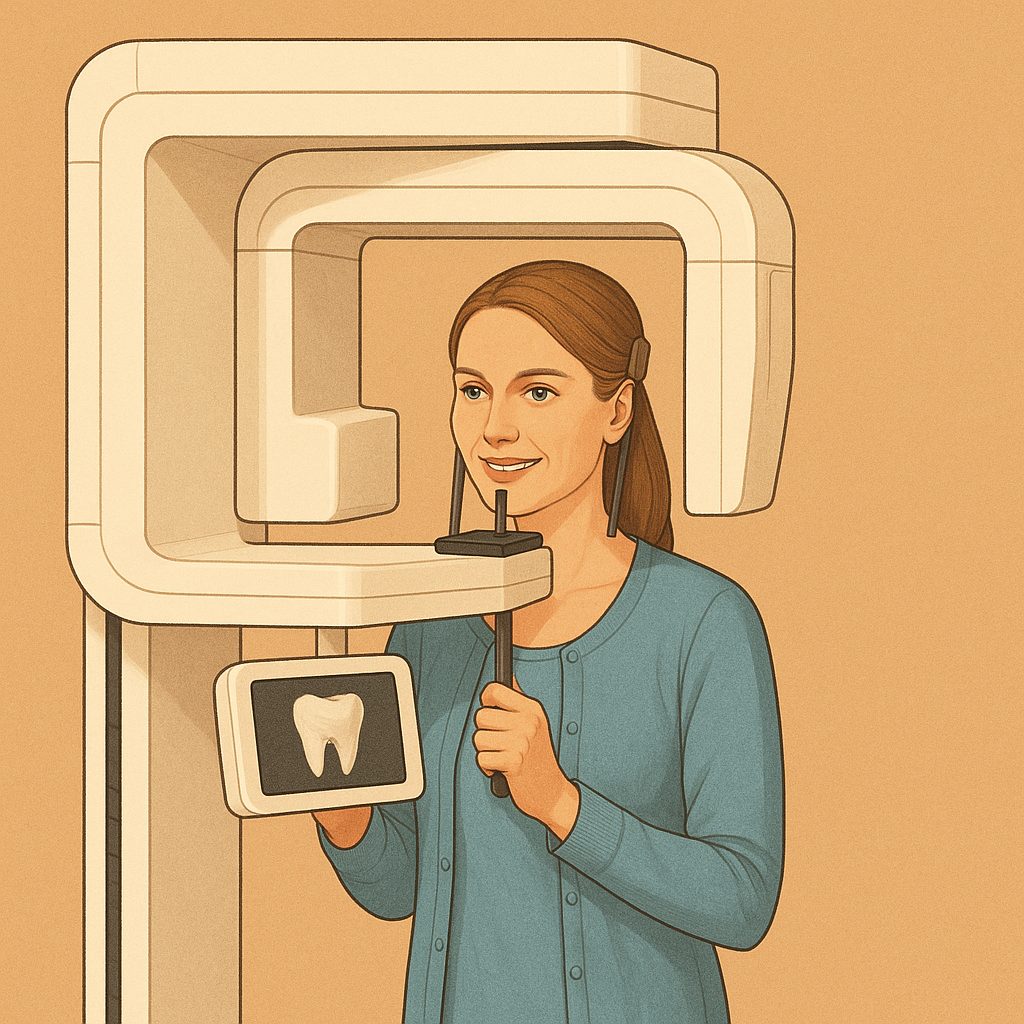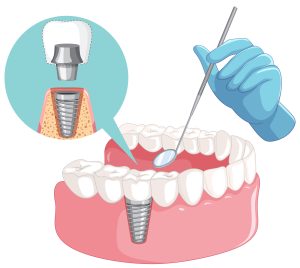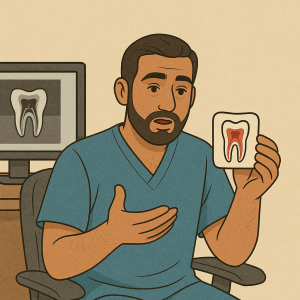Accurate diagnostics is the first step to successful dental treatment. In modern dentistry, where every detail matters, advanced technologies are essential. That’s why Cone Beam Computed Tomography — or CBCT scan — has become the gold standard for diagnostics in dental care.
At our Abu Dhabi clinic, a CBCT scan takes just seconds and helps plan treatment precisely. It’s safe, comfortable, and gives your dentist the full picture before any treatment begins.
What Is CBCT in Dentistry?
CBCT is a modern type of CT scan teeth. It uses low-dose X-rays to create hundreds of cross-sectional images and combine them into one detailed 3D model. Unlike traditional 2D X-rays, it shows bone density, tooth roots, hidden decay, and even small lesions. For a patient, it means fewer surprises and a more predictable result.
Why Do Patients Need a CBCT Scan?
- Fast and simple: the scan takes just a few seconds
- Safe: radiation dose is very low, similar to a short airplane flight
- Accurate: your dentist sees every detail from different angles
- Useful for many treatments: implants, braces, root canals, wisdom teeth removal
When Is CBCT Recommended?
Your dentist may recommend a dental CBCT in cases such as:
- Planning implant placement
- Checking root canals before treatment
- Preparing for orthodontics and braces
- Assessing bone injuries, cysts, or tumors
- Evaluating results of previous surgeries or restorations
What Will You See on the Scan?
A CBCT dental scan shows:
- Tooth root position and surrounding bone
- Bone density and volume
- Root canal structure and hidden decay
- Integrity of crowns, fillings, or implants
- Impacted or misaligned teeth
- Infections, cysts, or bone inflammation
What Does the Scanner Look Like?
It’s a compact machine with a rotating arm that moves silently around your head. You just sit or stand still for a few seconds. The computer instantly builds a clear 3D image for your dentist.
What Happens During the Scan?
You’ll be guided into position, bite gently on a small plastic piece, and stay still while the machine rotates. No pain, no discomfort. The results appear immediately on the screen and are analysed with the help of AI software for maximum precision.
AI Analysis at TRUE SMILE
At True Smile Dental Centre in Abu Dhabi, every CBCT scan is not only reviewed by your dentist but also analysed by artificial intelligence. The software evaluates each tooth individually, checks bone thickness, and identifies even the smallest signs of caries, pulpitis, periodontitis, or cracks that might be invisible to the human eye. This ensures your doctor doesn’t miss anything important and you receive the most accurate diagnosis and the best treatment possible.
Is CBCT Better Than a Regular OPG?
Many patients are familiar with OPG — the panoramic X-ray that shows all teeth on one flat image. It’s quick and useful, but it has its limits: it doesn’t show bone density, hidden cracks, or the exact position of nerves and roots. A CBCT scan, on the other hand, builds a full 3D model of your teeth and jaws. This gives your dentist much more information for precise planning of implants, orthodontics, or complex treatments. In other words, OPG is a good overview, but CBCT is the detailed map that helps avoid surprises.
Is It Safe?
Yes. A CBCT scan is much safer than a medical CT. One dental CBCT equals about the same radiation as a 3-hour flight. Most patients can have it done without any risk, including children.
Do You Need to Prepare?
There’s no special preparation. Just remove jewelry and metal objects, follow the technician’s instructions, and stay still for a few seconds. That’s all.
At True Smile Dental Centre in Abu Dhabi, we make sure your CBCT scan is fast, safe, and precise. With the added advantage of AI analysis, you can feel confident that nothing is overlooked and your treatment plan will be based on the most reliable information.




